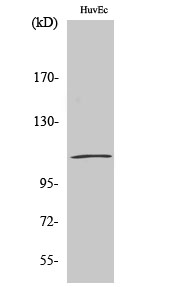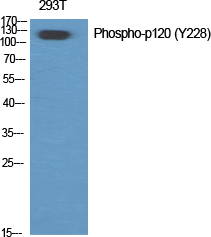Phospho Catenin-δ1 (Y228) Cell-Based Colorimetric ELISA Kit
- Catalog No.:KA1444C
- Applications:ELISA
- Reactivity:Human;Mouse;Rat
- Gene Name:
- CTNND1
- Human Gene Id:
- 1500
- Human Swiss Prot No:
- O60716
- Mouse Swiss Prot No:
- P30999
- Storage Stability:
- 2-8°C/6 months
- Other Name:
- Catenin delta-1 (Cadherin-associated Src substrate) (CAS) (p120 catenin) (p120(ctn)) (p120(cas))
- Detection Method:
- Colorimetric
- Background:
- alternative products:Experimental confirmation may be lacking for some isoforms,disease:May contribute to cell malignancy. Complete loss of expression was observed in approximately 10% of invasive ductal breast carcinomas investigated.,domain:A possible nuclear localization signal exists in all isoforms where Asp-626--631-Arg are deleted.,function:Binds to and inhibits the transcriptional repressor ZBTB33, which may lead to activation of target genes of the Wnt signaling pathway (By similarity). May associate with and regulate the cell adhesion properties of both C- and E-cadherins. Implicated both in cell transformation by SRC and in ligand-induced receptor signaling through the EGF, PDGF, CSF-1 and ERBB2 receptors. Promotes GLIS2 C-terminal cleavage.,induction:Induced in vascular endothelium by wounding. This effect is potentiated by prior laminar shear stress, which enhances wound closure.,PTM:Phosphorylated.,similarity:Belongs to the beta-catenin family.,similarity:Contains 10 ARM repeats.,subcellular location:Interaction with GLIS2 promotes nuclear translocation.,subunit:Belongs to a multiprotein cell-cell adhesion complex that also contains E-cadherin, alpha-catenin, beta-catenin, and gamma-catenin. Binds to the C-terminal fragment of PSEN1 and mutually competes for E-cadherin. Interacts with ZBTB33. Interacts with GLIS2.,tissue specificity:Expressed in vascular endothelium.,
- Function:
- transcription, cell adhesion, cell surface receptor linked signal transduction, Wnt receptor signaling pathway, cell-cell adhesion, biological adhesion, regulation of transcription,
- Subcellular Location:
- Cell junction, adherens junction . Cytoplasm . Nucleus . Cell membrane . Interaction with GLIS2 promotes nuclear translocation (By similarity). Detected at cell-cell contacts (PubMed:15240885, PubMed:17047063). NANOS1 induces its translocation from sites of cell-cell contact to the cytoplasm (PubMed:17047063). CDH1 enhances cell membrane localization (PubMed:15240885). Isoforms 4A and 1AB are excluded from the nucleus (PubMed:11896187). .; [Isoform 1A]: Nucleus .; [Isoform 2A]: Nucleus .; [Isoform 3A]: Nucleus .
- Expression:
- Expressed in vascular endothelium. Melanocytes and melanoma cells primarily express the long isoform 1A, whereas keratinocytes express shorter isoforms, especially 3A. The shortest isoform 4A, is detected in normal keratinocytes and melanocytes, and generally lost from cells derived from squamous cell carcinomas or melanomas. The C-terminal alternatively spliced exon B is present in the p120ctn transcripts in the colon, intestine and prostate, but lost in several tumor tissues derived from these organs.
- June 19-2018
- WESTERN IMMUNOBLOTTING PROTOCOL
- June 19-2018
- IMMUNOHISTOCHEMISTRY-PARAFFIN PROTOCOL
- June 19-2018
- IMMUNOFLUORESCENCE PROTOCOL
- September 08-2020
- FLOW-CYTOMEYRT-PROTOCOL
- May 20-2022
- Cell-Based ELISA│解您多样本WB检测之困扰
- July 13-2018
- CELL-BASED-ELISA-PROTOCOL-FOR-ACETYL-PROTEIN
- July 13-2018
- CELL-BASED-ELISA-PROTOCOL-FOR-PHOSPHO-PROTEIN
- July 13-2018
- Antibody-FAQs


